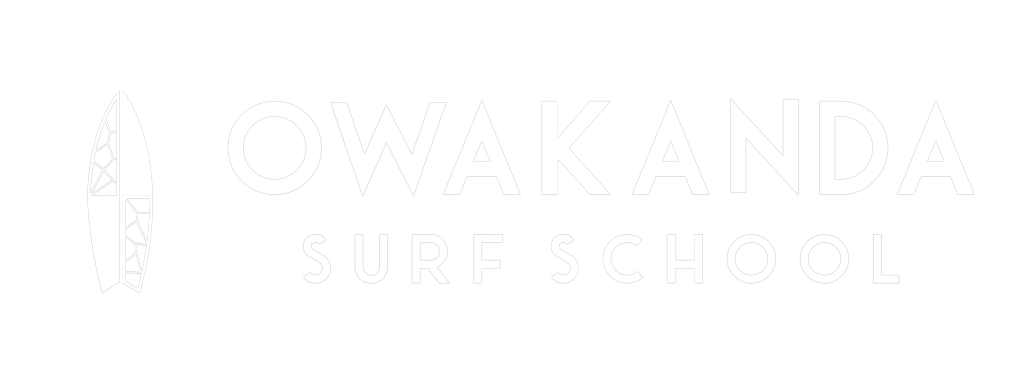FAQ
About Owakanda Surf School
Owakanda Surf Point is located off Galle Road in Rathgama, about 8 kilometers south of Hikkaduwa and 12km north of Galle, making it easily accessible for visitors in the area.
Owakanda Surf Point is a great alternative to the Hikkaduwa breaks, especially during peak season when Hikkaduwa tends to get overcrowded.
There are three surf breaks at Owakanda: a beach break, a reef break, and a beginners’ point near the reef, catering to surfers of all skill levels.
Owakanda Surf Point features an uncrowded, low power, left reef break that is consistent and holds up to 5ft with a 200m ride. The deeper reef makes it suitable for all surfing levels.
Yes, with its deeper reef and variety of breaks, including a specific beginners’ point, Owakanda Surf Point is suitable for surfers of all levels, including beginners.
Visitors can enjoy some good seafood restaurants located on the beach, perfect for a meal after a surfing session.
Owakanda Surf Point is known for being uncrowded, offering a more relaxed and enjoyable surfing experience compared to busier locations.
While the best time to surf can depend on seasonal changes, Owakanda Surf Point generally offers consistent surf conditions that can be enjoyed throughout the year.
We partner with several hotels and guesthouses from the luxury Crystal Sands next to our surf school, to more budget friendly homestays. Owakanda is also in close proximity to both Hikkaduwa and Galle so there are plenty of nearby lodging options, from hotels to guesthouses.
Owakanda Surf Point’s unique appeal lies in its variety of surf breaks suitable for all levels, its uncrowded nature, consistent waves, and the scenic beauty coupled with local culinary delights.
Genera Questions About Surfing in Sri Lanka
Surfing in Sri Lanka is safe with proper precautions. Beginners should take lessons and everyone should be aware of local conditions and respect the sea.
Beginners can surf at Weligama, Hikkaduwa, Bentota or in Owakanda where the waves are more gentle and surf schools are available.
Due to the warm waters, surfers typically wear swimwear, rash guards, or surf leggings for sun protection.
The prime months for surfing in Sri Lanka are from November to April, especially on the south-western coast.
Popular surfing spots include Arugam Bay, Hikkaduwa, Mirissa, and Weligama.
Yes, Mirissa is a well-known surfing spot with waves suitable for various levels of surfers.
Sri Lanka is excellent for beginners with many surf schools and spots with gentle waves.
No, the warm water temperatures in Sri Lanka typically make a wetsuit unnecessary, but a rash guard is recommended for sun protection.
Some popular surfing spots can get crowded, especially during the peak season, but there are many places where crowds can be avoided such as Owakanda 🙂
The best surf can often be found in Arugam Bay, Hikkaduwa, and Mirissa, depending on the season.
Yes, January is a warm month in Sri Lanka with average coastal temperatures around 27°C (81°F).
Arugam Bay is often referred to as the surfing capital of Sri Lanka due to its famous point breaks and international surfing competitions.
The best time to surf in Sri Lanka is from November to April on the south-western coast and from May to September on the eastern coast.
Absolutely, age is not a barrier to learning to surf. With good health, a sense of adventure, and proper instruction, a 40-year-old can learn to surf.
Sri Lanka boasts some excellent surfing spots, with Arugam Bay being internationally recognized, and Hikkaduwa and Mirissa providing great waves for all levels.
Surfing is safe in Sri Lanka with proper safety measures. Beginners should take lessons, and all surfers should stay informed about the local sea conditions.
Many beaches in Sri Lanka, especially those popular with tourists, are kept clean and are suitable for recreational activities.
The waves in Sri Lanka can range from small to medium size, making it perfect for beginners and intermediate surfers. Arugam Bay can see larger waves, appealing to more experienced surfers.
The best time to visit Sri Lanka depends on the region: December to March is ideal for the west and south coasts, while April to September is best for the east coast.
Sri Lanka can be a budget-friendly destination. It offers a range of travel options to suit various budgets, from affordable guesthouses to luxury resorts.
Some surfing spots can get crowded, especially during the peak season and near popular tourist areas, but there are many spots that remain relatively uncrowded.
Yes, it is safe to swim in the sea in many parts of Sri Lanka, especially in tourist areas where beaches are monitored for swimmer safety.
About the Surrounding Areas
Hikkaduwa is excellent for surfing, offering consistent waves and a variety of spots suitable for different skill levels.
Yes, Hikkaduwa Beach is generally safe for swimming with designated areas that are protected from surfers and any strong currents.
Yes, Hikkaduwa is a small coastal town known for its beaches, surf, and vibrant coral reefs.
Hikkaduwa is important for its contribution to Sri Lanka’s tourism, its marine sanctuary, and its reputation as a premier surfing destination.
The main beach area is known simply as Hikkaduwa Beach.
Tourists visit Sri Lanka throughout the year, with peak tourist seasons being from December to March for the west and south coasts and May to September for the east coast.
The best time to visit the south coast is from November to April when the weather is dry and the seas are calm, ideal for beaches and surfing.
Bentota is considered one of the safest beaches in Sri Lanka due to its calm waters and well-maintained tourist facilities.
Got a question about our surf lessons or surfing in Sri Lanka that is not covered here? Please contact us and we’ll try to answer.

